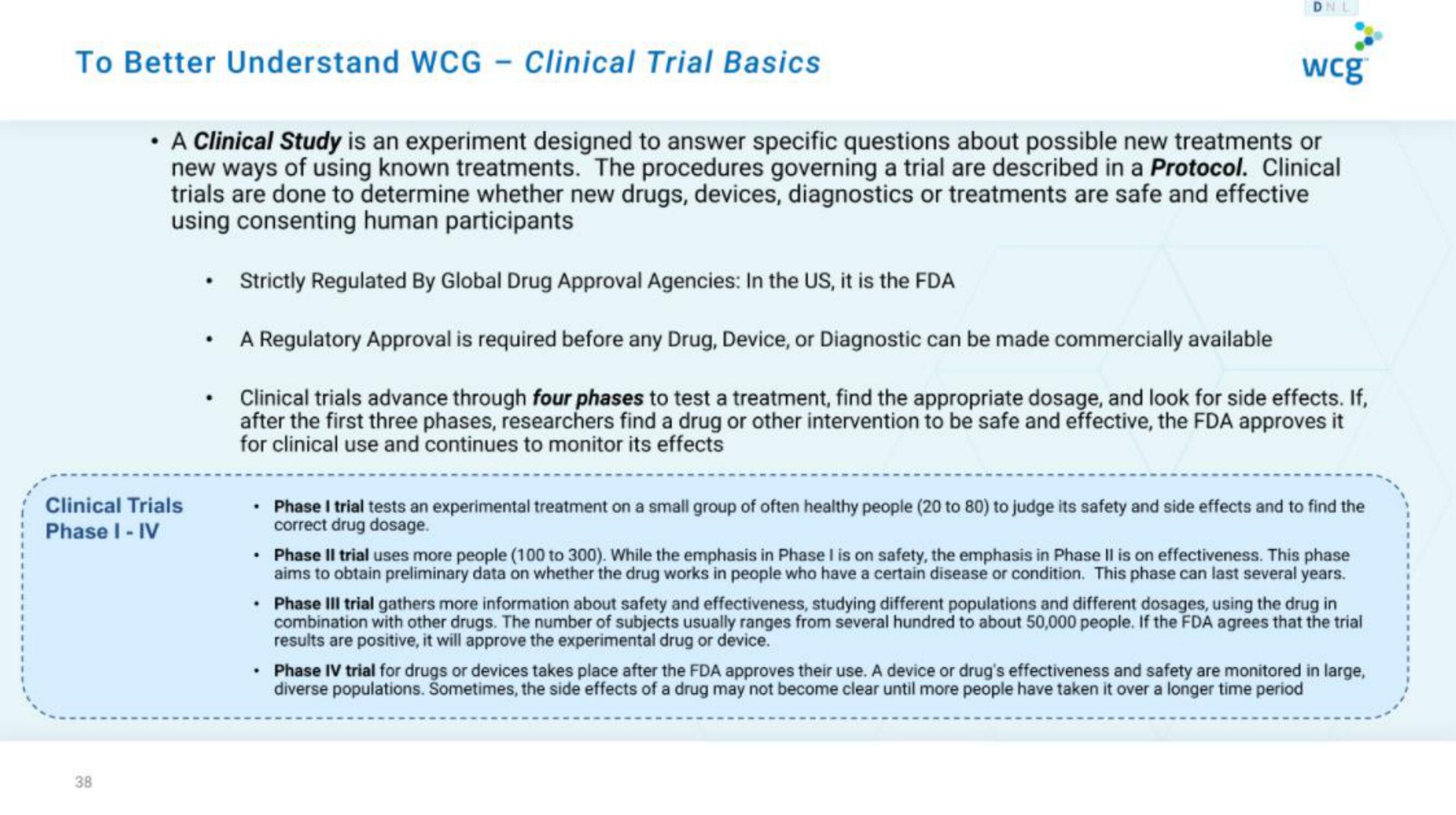WCG IPO Presentation Deck
To Better Understand WCG - Clinical Trial Basics
Clinical Trials
Phase I - IV
38
DNL
wcg
• A Clinical Study is an experiment designed to answer specific questions about possible new treatments or
new ways of using known treatments. The procedures governing a trial are described in a Protocol. Clinical
trials are done to determine whether new drugs, devices, diagnostics or treatments are safe and effective
using consenting human participants
Strictly Regulated By Global Drug Approval Agencies: In the US, it is the FDA
A Regulatory Approval is required before any Drug, Device, or Diagnostic can be made commercially available
Clinical trials advance through four phases to test a treatment, find the appropriate dosage, and look for side effects. If,
after the first three phases, researchers find a drug or other intervention to be safe and effective, the FDA approves it
for clinical use and continues to monitor its effects
• Phase I trial tests an experimental treatment on a small group of often healthy people (20 to 80) to judge its safety and side effects and to find the
correct drug dosage.
•
Phase II trial uses more people (100 to 300). While the emphasis in Phase I is on safety, the emphasis in Phase II is on effectiveness. This phase
aims to obtain preliminary data on whether the drug works in people who have a certain disease or condition. This phase can last several years.
• Phase III trial gathers more information about safety and effectiveness, studying different populations and different dosages, using the drug in
combination with other drugs. The number of subjects usually ranges from several hundred to about 50,000 people. If the FDA agrees that the trial
results are positive, it will approve the experimental drug or device.
• Phase IV trial for drugs or devices takes place after the FDA approves their use. A device or drug's effectiveness and safety are monitored in large,
diverse populations. Sometimes, the side effects of a drug may not become clear until more people have taken it over a longer time periodView entire presentation